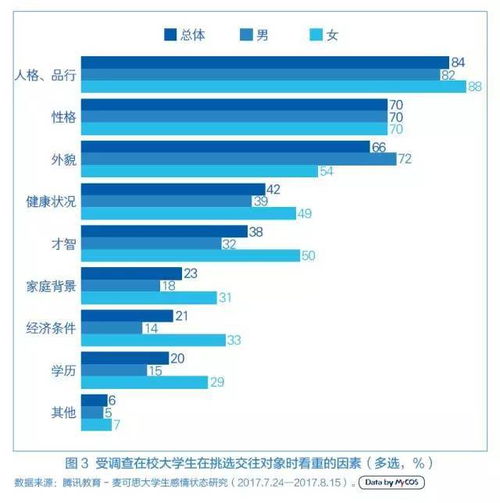大数据行程是怎么查出来的
Title: Maximizing Reach in Big Data Analysis
In the realm of big data analytics, the reach of a query or analysis largely depends on several factors, including the volume, variety, velocity, and veracity of the data being analyzed, as well as the computational resources and algorithms employed. Let's delve into these factors to understand the maximum reach achievable in big data analysis.
Volume:

Volume refers to the sheer size of the data being analyzed. In big data analytics, the more data available, the greater the potential reach of analysis. However, handling massive volumes of data requires robust infrastructure and efficient data processing techniques. Utilizing distributed computing frameworks like Hadoop or Spark enables processing large volumes of data in parallel across multiple nodes, thus maximizing reach.
Variety:
Variety denotes the different types and sources of data, including structured, semistructured, and unstructured data. By integrating diverse data sources such as text, images, videos, social media feeds, sensor data, and more, analysts can gain comprehensive insights. Employing advanced analytics techniques like natural language processing (NLP), machine learning (ML), and deep learning (DL) can further enhance the reach by extracting valuable insights from various data types.
Velocity:
Velocity refers to the speed at which data is generated, collected, and analyzed. Realtime or nearrealtime analytics enable organizations to respond promptly to changing conditions and emerging trends. Stream processing frameworks like Apache Kafka and Apache Storm facilitate highvelocity data ingestion and analysis, allowing for timely decisionmaking and maximizing the reach of insights derived from streaming data sources.
Veracity:
Veracity concerns the quality, reliability, and accuracy of the data. Poor data quality can lead to erroneous insights and decisions. Employing data cleansing, preprocessing, and validation techniques helps improve data quality and ensures the reliability of analysis results. Additionally, implementing data governance practices and leveraging data quality tools enhances the veracity of the data, thereby maximizing the reach of trustworthy insights.
Computational Resources:
The availability of computational resources, including processing power, memory, and storage, significantly influences the reach of big data analysis. Investing in scalable infrastructure, such as cloud computing platforms (e.g., AWS, Azure, Google Cloud), enables organizations to dynamically allocate resources based on workload demands, thereby maximizing the reach of analysis without being constrained by resource limitations.
Algorithms and Techniques:
The selection of appropriate algorithms and analytical techniques plays a crucial role in maximizing the reach of big data analysis. Employing parallelizable algorithms and distributed computing paradigms enables efficient processing of large datasets. Additionally, employing advanced analytical models, such as predictive analytics, anomaly detection, and pattern recognition, enhances the depth and breadth of insights derived from big data, thus maximizing reach.
Guiding Recommendations:
1.
Define Clear Objectives:
Clearly define the objectives and scope of analysis to focus efforts on extracting relevant insights.2.
Data Quality Assurance:
Prioritize data quality assurance initiatives to ensure the reliability and accuracy of analysis results.3.
Utilize Scalable Infrastructure:
Invest in scalable infrastructure and cloudbased solutions to accommodate growing data volumes and analysis requirements.4.
Embrace Advanced Analytics:
Explore advanced analytics techniques, including ML, NLP, and AI, to uncover hidden patterns and correlations in data.5.
Iterative Approach:
Adopt an iterative approach to analysis, continuously refining models and algorithms based on feedback and evolving business needs.In conclusion, the maximum reach achievable in big data analysis is contingent upon factors such as data volume, variety, velocity, veracity, computational resources, and the application of appropriate algorithms and techniques. By addressing these factors and adhering to guiding recommendations, organizations can unlock the full potential of big data analytics and derive actionable insights to drive informed decisionmaking and gain a competitive edge in the digital era.
标签: 大数据查行程可以查多久的 大数据行程保留几日数据 大数据的行程几天可以消失
相关文章
-
景顺成长,探索中国城市化进程中的绿色发展之路详细阅读

在21世纪的今天,城市化已成为全球范围内不可逆转的趋势,中国,作为世界上人口最多的国家,其城市化进程尤为引人注目,随着经济的快速发展,城市化带来的问题...
2025-10-01 198
-
深度解析,股票000777中核科技的投资价值与未来展望详细阅读

在当今的投资市场中,股票投资无疑是一个热门话题,而在众多股票中,股票代码为000777的中核科技因其独特的行业地位和发展潜力,吸引了众多投资者的目光,...
2025-09-30 240
-
深圳证券交易所交易规则,投资市场的指南针详细阅读

亲爱的读者,想象一下,你正站在一个繁忙的十字路口,四周是熙熙攘攘的人群和川流不息的车辆,每个人都在按照交通规则行事,红灯停,绿灯行,黄灯亮起时,大家会...
2025-09-30 200
-
基金202005,揭秘投资背后的逻辑与策略详细阅读

在投资的世界里,基金是一种备受瞩目的投资工具,它以其多样化的投资组合、专业的管理团队和相对稳定的收益吸引了众多投资者的目光,我们将深入探讨基金2020...
2025-09-30 193
-
探索中国平安行销,策略、实践与未来趋势详细阅读

在当今竞争激烈的市场环境中,行销策略对于企业的成功至关重要,中国平安,作为中国领先的金融服务集团,其行销策略不仅在国内市场上取得了显著成效,也为全球行...
2025-09-29 200
-
深入解析数码视讯股票,投资价值与市场前景详细阅读

在当今数字化时代,数码视讯行业作为信息技术领域的重要组成部分,正逐渐成为投资者关注的焦点,本文将深入探讨数码视讯股票的投资价值与市场前景,帮助投资者更...
2025-09-29 242
-
悦康药业,创新与责任并重,引领健康未来详细阅读

在当今这个快节奏、高压力的社会中,健康成为了人们越来越关注的话题,而在医药行业中,有这样一家企业,它以创新为驱动,以责任为担当,致力于提供高质量的药品...
2025-09-29 192
-
深度解析,定向增发股票背后的资本游戏与投资策略详细阅读

在资本市场的棋盘上,股票的每一次变动都牵动着投资者的神经,定向增发作为一种特殊的融资方式,因其能够为上市公司带来资金的同时,也为投资者提供了新的投资机...
2025-09-29 196
